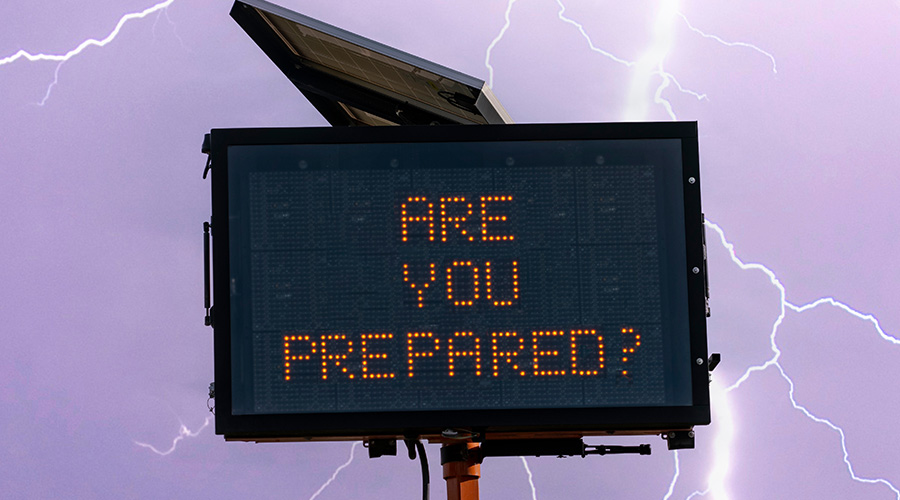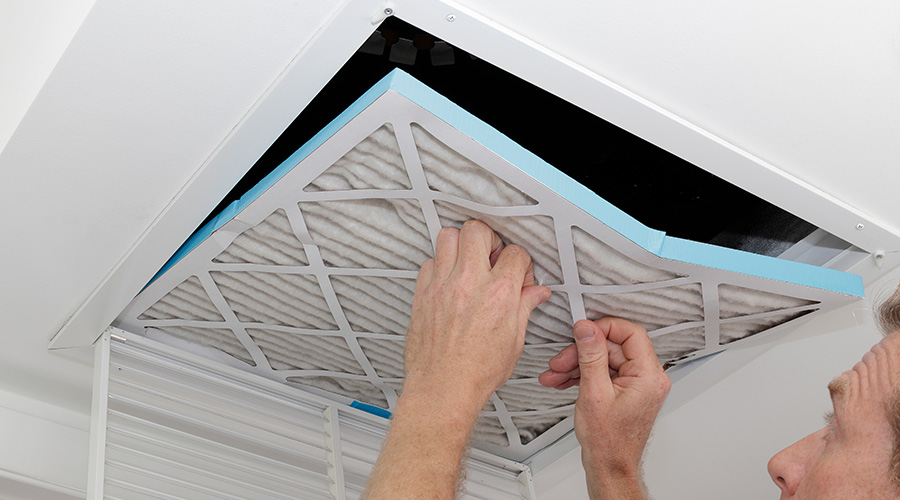How to Prepare, Respond and Recover From a Utility Outage
Follow these emergency preparedness steps to ensure business continuity and mitigate loss or damage due to a power outage.
Utility outages can cause significant damage to businesses and commercial real estate. In February 2021, Texas faced an extraordinary winter storm that brought frigid temperatures and snow which caused power grid failures resulting in a statewide crisis. Unfortunately, this catastrophe was inevitable because the energy grid was not winterized and thus could not generate enough electricity to power homes, offices, and businesses.
Then, as demand grew after the storm, the state implemented rolling blackouts to try and prevent the grid from being overwhelmed, but with no power, countless pipes froze in homes and commercial buildings. Many people struggled to stay warm in below freezing temperatures and business owners across the state lost income while also facing property damage. By the time power returned to normal, Texas suffered tens of billions of dollars in insured damages and economic losses.
The Texas winter storm may be an extreme case but planning and preparing for a utility outage can help facility managers maintain an efficient response and reduce losses. Having a restoration and recovery plan, as well as planning in advance for a potential shutdown or utility loss can help to minimize damages and disruption.
Plan for a potential event
First, it is important for a business to secure its facilities to prevent unauthorized access and costly property damages in the advent of a significant storm. This includes making sure outdoor lights along the perimeter work properly and there’s a continuous monitoring of access systems to see who is entering and exiting the area.
In addition, priority should be placed on inspecting and repairing the heating systems before winter comes. This would help avoid any unexpected surprises should the weather change suddenly. The indoor temperature should be maintained at least 50 degrees to prevent freezing.
Next, considering the quantity of water that flows throughout a building, it would be beneficial for property owners to establish a Water Damage Prevention Plan as it would provide equipment and supplies for water or fluid cleanup should pipes rupture. And by incorporating IoT (Internet of Things) devices, building operators would be implementing a valuable differentiator because these tech marvels provide real-time monitoring of critical systems and equipment. They can remotely detect motion and temperature, and issue alerts if a water leak is detected, or a power loss occurs. Key employees should also be identified as part of Water Damage Prevention Plan for the business to quickly respond to damage and help alleviate confusion at the onset of a crisis.
It’s only a matter of time before a power outage occurs. Therefore, it would be prudent today for facility managers to develop an Alternative Energy Plan. This initiative would include a checklist for generators and battery energy storage systems to give the business enough power to support critical systems for a period of time. It would also provide an added level of comfort for owners and managers to know that a mitigation strategy is in place should electrical power go down.
Preparing for an Impending Event
It would be wise to assume that it is inevitable major storms or other weather-related events will potentially disrupt normal power service, and subsequently interrupt normal business operations. This unfortunately can happen if a storm is forecasted to bring high winds, sub-freezing temperatures, ice and snow, and heavy rain. But knowing how weather events can potentially impact operations can certainly help facility managers prepare. Before a storm is the ideal time to inspect the entire facility for vulnerabilities and make any necessary repairs to exterior structures such as roofs, drains, and downspouts. It is especially important to repair roof damage because if left unattended it can compromise the interior or exterior structure of a building.
It is also a good time to take stock of all the utilities within the building or property and consider whether they’re all critical. The cautious course is to turn off the utilities not needed for critical processes or equipment including fire protection, fire alarms, sump pump, and heating systems. Power outages during the winter or cold season for example can also lead to frozen or burst pipes. To help prevent this, facility managers should shut off and drain any unnecessary water-based piping systems. This limits the number of pipes that can freeze and potentially cause extensive property damage to the building.
In addition, if a building employs alternative energy sources, now is the time to make sure they work and are arranged properly. If fuel is required for generators, managers should check storage tanks and top them off. If there’s a battery energy storage system, facility managers should inspect to assure they are fully charged so they are ready to provide power to critical equipment and processes when needed.
Equally important, if there’s snow in the forecast, now is the time to hire a vendor for snow removal. This is significant for safety reasons and to make sure snow accumulation doesn’t lead to avoidable property damage.
Managing Business During a Prolonged Loss of Utility Service
If it turns out that utility services will be out for a longer period, it is imperative that businesses have a continuity plan and disaster recovery plan in progress. For example, a business may have to move to another facility or location that can provide make-up capacity or services. This can help the business continue operations, even if it’s in a limited way. But ownership and management must remember to continue inspecting their emergency power supply or heating equipment. It is critical to check these systems on a regular basis to make sure they’re running safely and properly.
The team will also want to continue monitoring and inspecting their building(s) interior and exterior structure. During prolonged outages, there is an increased risk of property and water damage. By simply touring facilities regularly, employees can assess the situation and check for damages.
If the business stores critical finished goods in the building, moving them to another facility that is not affected by the power outage can help prevent damage. The same principle applies to critical equipment and machinery. Moving them to a different facility or location can allow for make-up capacity of production for the business.
Recovering from a Utility Outage
If a business sat idle or was seriously impacted by a utility outage, recovery can take time and hard work. Repairing property damage should be a focus and priority for the business. This is when having a business continuity plan in place before and during the outage could help recover and restore services as quickly as possible. But while every business’s recovery will be different, facility managers can start the process by cleaning up water damage and taking immediate steps to ensure employees’ safety. Pre-planning with a business continuity plan (BCP) is crucial to reducing the restoration time after an event.
First identify where the damage is and secure the building and utilities before beginning to clean up the damage and decontaminate the building and its contents. Then, get the electrical systems inspected prior to services being restored by hiring a qualified electrician to inspect and test the building’s electrical system.
Next, because restoring primary power is key, it can be a good idea to use two- to three-person teams to restore power safely and identify any issues that may occur because failures can take place during power startups. Therefore, repowering circuits in a methodical way can help pinpoint any electrical issues in the facility. In addition, facility managers should inspect equipment and machinery before powering them on to be certain they’re in safe condition. For example, boilers and furnaces should get inspected, cleaned, and purged before they’re put back in service, and HVAC systems should also get inspected, cleaned, and sanitized. It’s a good idea to check dampers, ductwork, ventilation openings, fuel or power supply, and equipment. However, businesses should be cautious because some equipment may need to be recertified or re-commissioned before use. It’s important to inspect production and processing equipment before bringing them back online.
Finally, to ensure there are no frozen pipes in the building when turning on normal heating in the facility, it would be prudent to increase the heat at a slow rate and use teams of employees around the facility to monitor for any leaks and damages. Regarding fire protection systems, if the system was damaged, it would be a good idea to make sure they’re flushed, re-charged, and put back in service by a reputable fire protection contractor.
At the end of the day, it’s wise to review the business continuity plan, and check to see if changes need to be made to the restoration and recovery procedures. The plan may also include checklists and processes for restarting operations such as reaching out to vendors, employees and suppliers.
Robert Sullivan is the Real Estate Industry Practice Lead for The Hartford’s Middle and Large Commercial segment. With more than 30 years of underwriting experience, Robert specializes in the real estate, retail, restaurant, and hotel industry sectors.
Related Topics:












